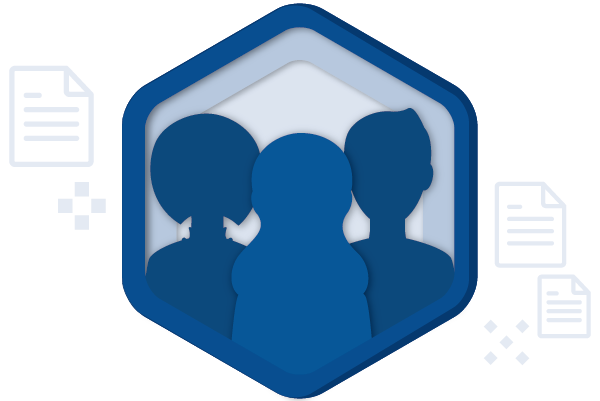While striving for perfection in every facet of life isn't realistic, there are times when you need to be exceptional. Case in point: e-discovery. High stakes and tight deadlines make good process critical, and troves of data can make it expensive. But, as the Relativity community often proves, the right approach can yield impressive results.
Scott Carlson, a partner at Seyfarth Shaw, knew this to be true. In 2004, he embarked on a journey and established the firm’s e-discovery group. When he saw electronic discovery blooming on the horizon, he and his team buckled down and established the kind of strategy that would ultimately make waves for their firm.
Formalizing Seyfarth’s e-Discovery Team
Many attorneys are all-stars in crafting, and subsequently winning, their cases. Few are well versed in technology and the e-discovery process.
In the early 2000s, many partners would consult with Scott on their technology-related questions due to his computer science background and his interest in technology.
“What we now know as e-discovery was becoming a large component of my daily job,” Scott remarked. “So, I decided to formalize Seyfarth’s e-discovery group.”
When Scott proposed forming the team, the firm’s leadership was on board.
“Being an entrepreneurial firm, Seyfarth was receptive to this idea,” Scott said. “They saw value in offering clients a team specializing in the e-discovery process. This is not the skillset that your typical litigator has.”
What Do PC Magazine, Successful e-Discovery Teams Have in Common? Everything.
As their workload increased, Seyfarth’s two-person e-discovery team needed to bring in more members. The new recruits came from myriad career paths. Some were newly minted attorneys, fresh out of law school. Others had spent time working for e-discovery vendors. A handful were more seasoned attorneys with technology skills who also joined the group.
All team members had one thing in common: a love of technology.
“It is easier to teach the law to attorneys than to teach them what a PST file is,” said Jay Carle, a partner at Seyfarth. “If you’re not excited when your PC Magazine shows up in the mail, this isn't the group for you.”
Jay joined the e-discovery team in 2008 after graduating from Chicago Kent College of Law. Like other team members, Jay had an extensive technology background. He was in the technology industry for several years before attending law school.
At Chicago Kent College of Law, Jay helped establish the Center for Access to Justice & Technology (CAJT). Through CAJT, technology makes the court system more accessible to people with limited resources.
“The work I did for CAJT introduced me to Scott and the Seyfarth team,” Jay said. “Everything I was reading then was about e-discovery and how it was changing the legal field. I wanted to be a part of it.”
Explaining Tech Magic in Layman’s Terms
Successful litigators spend most of their time learning the ins and outs of their case. Seyfarth’s litigators are no exception—making the firm’s e-discovery team invaluable. The team uses their skillsets to sift through massive amounts of documents, so litigators can use that information in a defensible way.
"This way, litigators focus on the merits of a case," Scott said. "We give them the documents to win in an efficient and cost-effective manner.”
Winning cases in a timely and cost-efficient way often hinges on the effective application of spiffy tools like technology-assisted review and clustering. Therefore, Seyfarth's e-discovery team will suggest a specific tool to litigators when applicable. In most cases, litigators give the team the green light to move forward.
“Our partners trust us,” Jay said. “We do a good job and have an established track record.”
Additionally, the team explains technology in terms litigators understand. For example, to describe active learning, Jay likens the tool to Netflix.
“The more movies you watch, the more Netflix's suggestions improve. It gets better at knowing your preferences,” Jay noted.
In the same way, Relativity Assisted Review learns from reviewers’ coding decisions to mark documents as relevant or not relevant.
“It makes a difference explaining technology in this way," Jay added.
Doing Discovery Smarter
Seyfarth’s e-discovery group continues evolving alongside the e-discovery field. In 2011, the group rebranded to include information governance (IG) services. Much like e-discovery once appeared on the horizon of everyday legal work, IG was becoming key to getting growing data volumes under some control—an important tactic for streamlining work downstream.
By expanding into IG, the group helped clients assess the risk around keeping information longer than its value may last. Then, they could decide the next course of action.
Information governance encompasses many layers—discovery, privacy, records management, and information security.
“Our team works in concert to understand these layers to give the right advice to our clients,” Scott said.
Today, clients in this space are becoming savvier. They are not just asking for efficiency in the e-discovery process—they are demanding it. According to Scott, clients appreciate having an open dialogue about their options. When working with clients, he first asks them about their tolerance for risk. Based on their response, he outlines their options based on their comfort level.
“Clients are more cost conscious and want law firms to do e-discovery in a smarter way,” Jay said. “Having an e-discovery group like Seyfarth’s is a key differentiator for these clients."
Though e-discovery has been a staple in the legal world for years, its impact is still newly felt by some professionals who don't see it as their bread and butter. Satisfying savvy clients while simplifying the learning curve for those who are less familiar with the demands of this work is what Seyfarth's dedicated e-discovery team was born to do.
“Most attorneys are too risk-averse. We identify the risk and help them find a realistic solution to their problem,” he said. “The greatest compliment I’ve received from a client is: ‘It’s great to get practical advice from you.’”
As technology advances, Seyfarth’s e-discovery team will continue gaining traction—and members. The team has 12 attorneys and counting. Scott and Jay expect the group to continue growing as new technological advancements take hold.
“e-Discovery is becoming more sophisticated with emerging technologies,” Jay said. “Forward-thinking firms see the benefit in having e-discovery specialists. We reduce risk by handling e-discovery the right way.”











